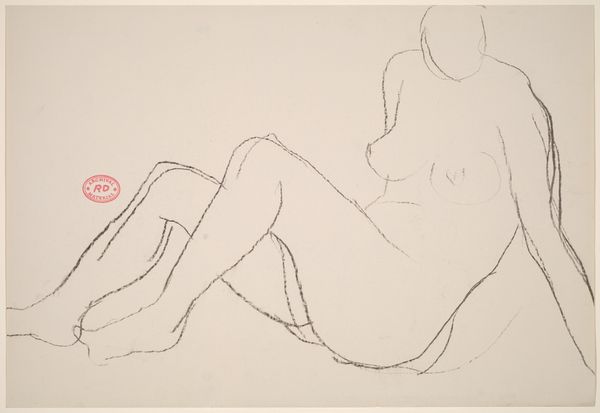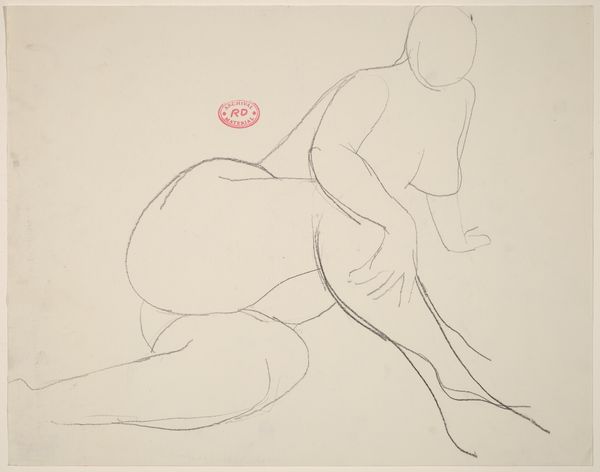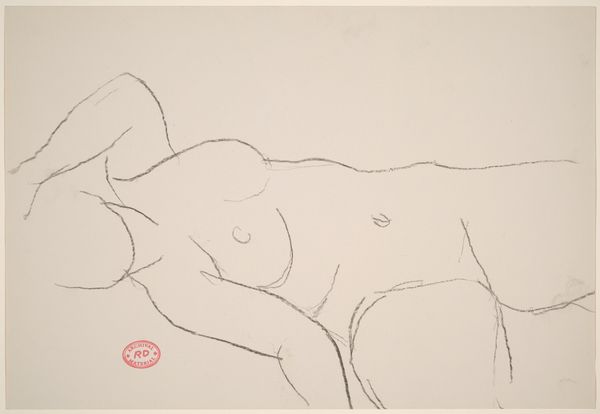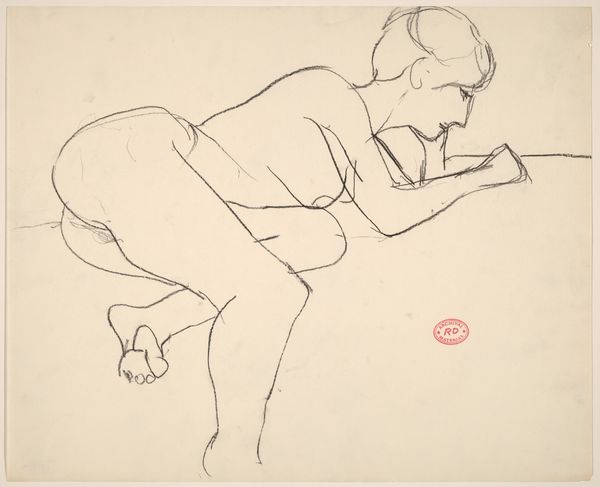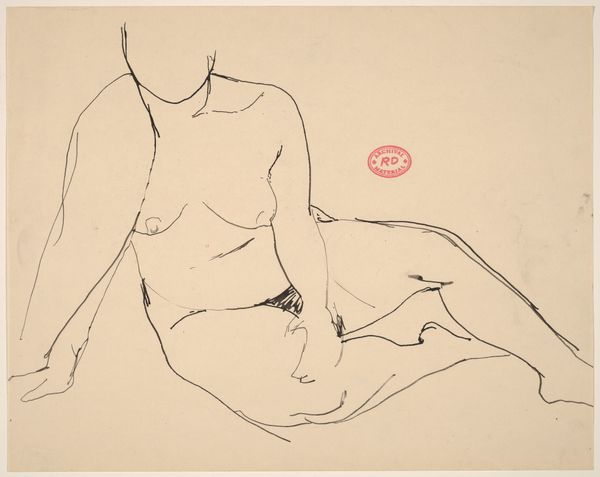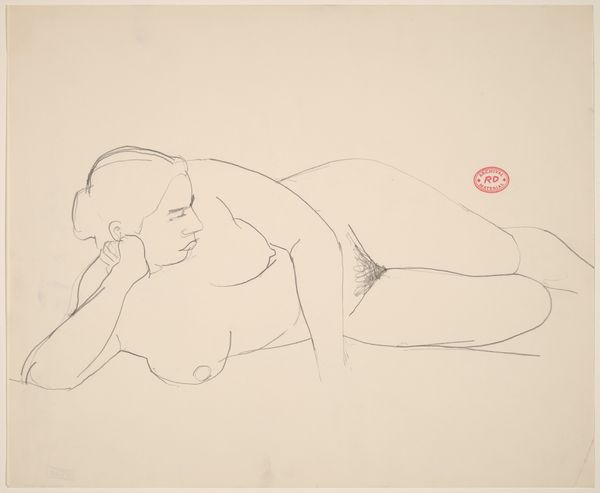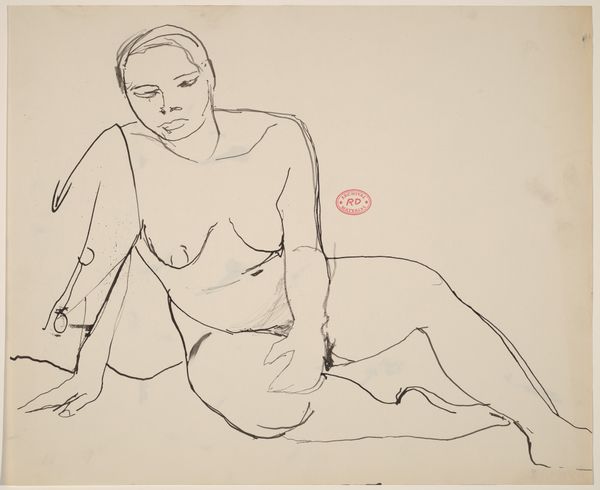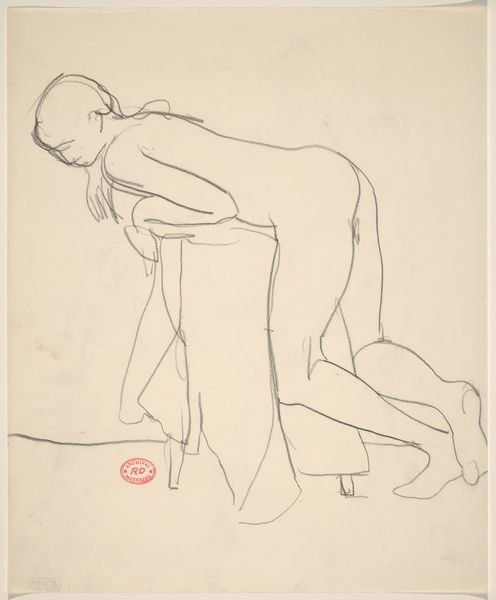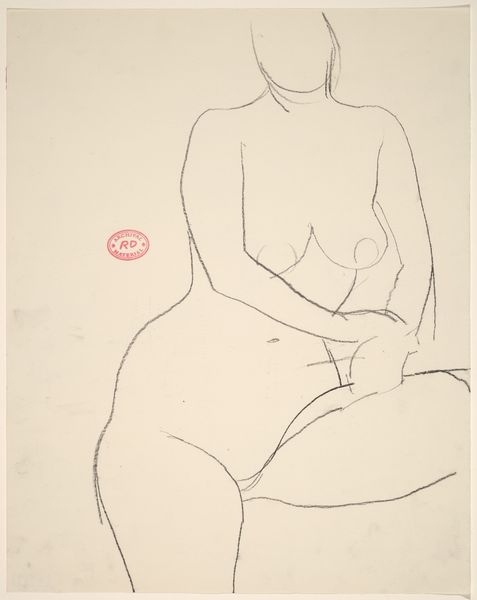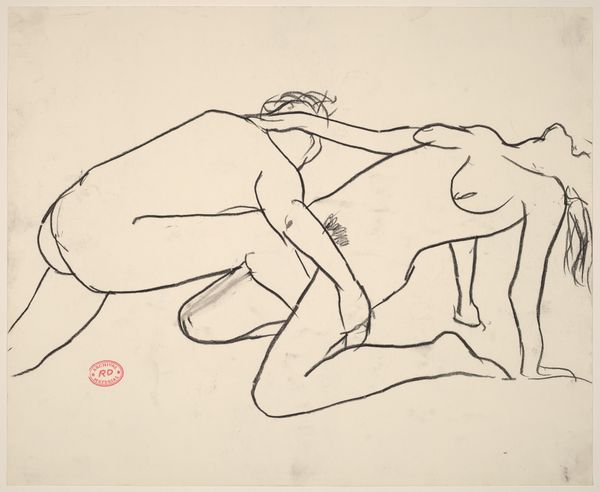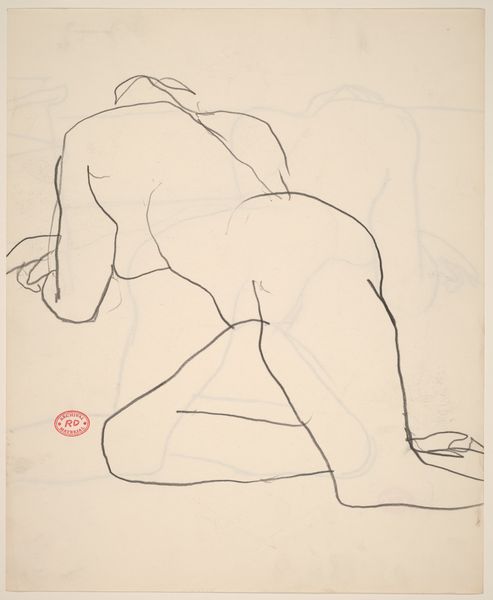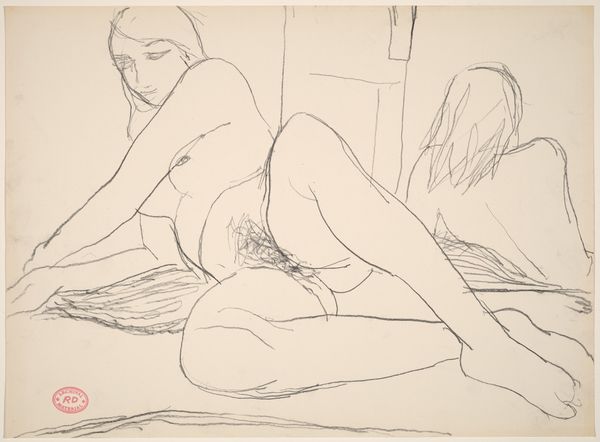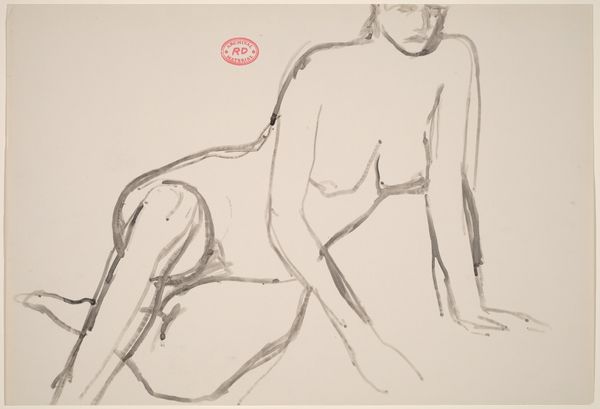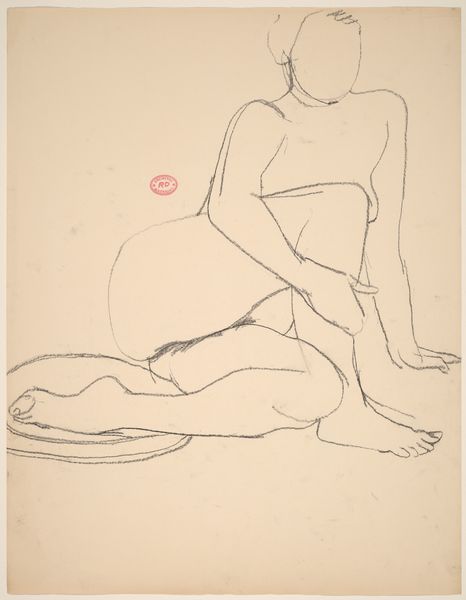![Untitled [nude resting on her left side and leaning on her left hand] by Richard Diebenkorn](/_next/image?url=https%3A%2F%2Fd2w8kbdekdi1gv.cloudfront.net%2FeyJidWNrZXQiOiAiYXJ0ZXJhLWltYWdlcy1idWNrZXQiLCAia2V5IjogImFydHdvcmtzLzEzOWM3OTUyLWZmYTctNGIyMi04Njc2LTM1MGQ2NjA2NGRmYy8xMzljNzk1Mi1mZmE3LTRiMjItODY3Ni0zNTBkNjYwNjRkZmNfZnVsbC5qcGciLCAiZWRpdHMiOiB7InJlc2l6ZSI6IHsid2lkdGgiOiAxOTIwLCAiaGVpZ2h0IjogMTkyMCwgImZpdCI6ICJpbnNpZGUifX19&w=3840&q=75)
Untitled [nude resting on her left side and leaning on her left hand] 1955 - 1967
0:00
0:00
drawing, pencil
#
drawing
#
figuration
#
bay-area-figurative-movement
#
pencil drawing
#
pencil
#
nude
Dimensions: overall: 29.2 x 36.8 cm (11 1/2 x 14 1/2 in.)
Copyright: National Gallery of Art: CC0 1.0
Curator: It's a rather subdued, almost dreamlike impression, isn’t it? Editor: Absolutely. This is an untitled drawing by Richard Diebenkorn, made sometime between 1955 and 1967. What we see is a nude figure resting, leaning casually on her left hand. Simple pencil on paper, but it speaks volumes, doesn't it? Curator: The line is so tentative, as if he's coaxing the form out of the page itself. It makes me think about how our own bodies hold stories, secrets almost. I can feel the weight of the pose but there's an amazing ethereality at the same time. Editor: And there's a quiet power in that simplicity. Diebenkorn was, of course, working during a period where abstract expressionism reigned. Yet, here he is, focusing on the figure, albeit with that incredibly loose, almost gestural approach. He seemed very interested in deconstructing conventions through simplicity. How do you read that within the artistic currents of that time? Curator: He was never afraid of going his own way and always retained certain elements of representational forms, the human figure, landscapes... It's brave, actually, to be so quiet amidst the noise of movements. Like finding a small, still pool of water in a rushing river. Editor: Yes, it speaks to a broader move in the post-war art world where the artist became increasingly concerned with individual perception, inner worlds, but maybe not only at the scale of epic gesture as some abstract expressionists tended to manifest. Curator: I get that. It reminds me of Agnes Martin in some ways. Quietly insistent and very human. Looking at this, I feel calmer, as if invited to just breathe and exist. What do you get out of it, now after reflecting on this for a while? Editor: Well, in light of all the things we have considered, I see it as an intimate act. To depict and reflect on the human form using such minimal means, creating an emotional accessibility within complex cultural contexts. Thank you for that inspiring interpretation.
Comments
No comments
Be the first to comment and join the conversation on the ultimate creative platform.
